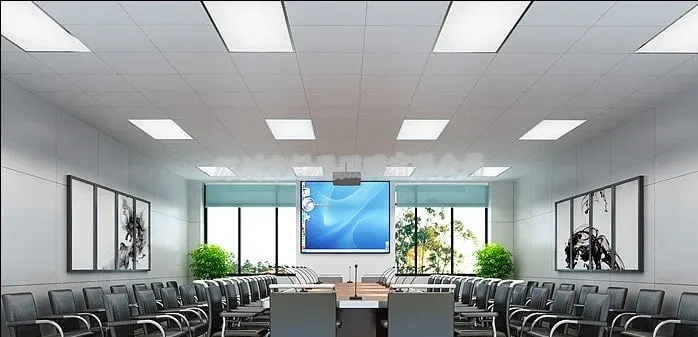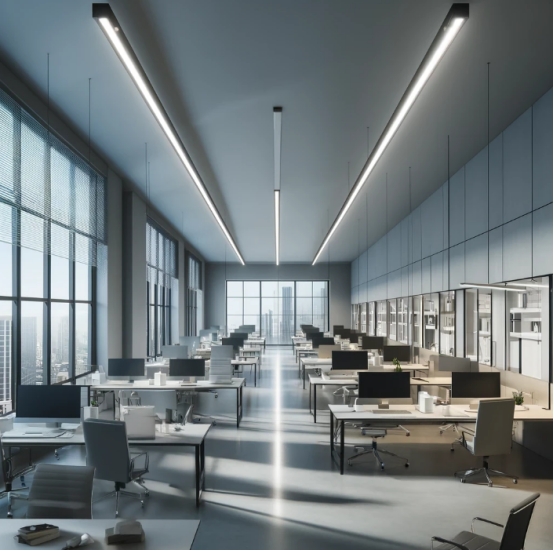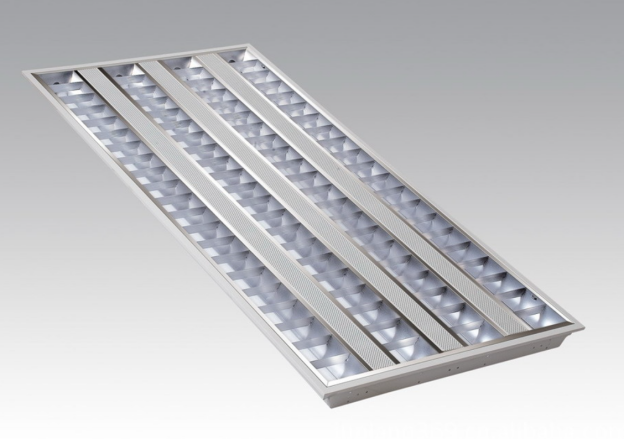In the lively world of outdoor businesses, selecting the correct waterproof luminaire is more challenging than pie. There’s a universe of options, an avalanche of brands, models, and styles. Still, trying to figure it out? Breathe easy. We’re here to help. This guide will simplify the process for you, slicing through the jargon and illuminating the path to making the right decision.
First, let’s establish something: your outdoor business needs good lighting. It’s not up for debate. The suitable waterproof luminaire can set the mood, amplify security, and enhance the overall aesthetic. We’re not just talking about any light fixture. It must be waterproof, ready to combat the elements without batting an eyelid.
Sounds interesting? Buckle up! We’re about to embark on a journey, unveiling the secrets to choosing the perfect waterproof luminaire for your business. Let’s navigate the labyrinth of lumens, delve into durability, and uncover the importance of energy efficiency. By the end, you’ll be ready to make an informed decision that’ll bring light, life, and a lot of charm to your outdoor business.
Understanding Your Business’ Lighting Needs
Assessing Your Outdoor Space
First things first, you need to take a good look at your outdoor space. Walk around it. Stroll around in the morning. Take another walk at noon. Then, pay a visit at dusk. Different times bring out various aspects of your space. Look at the size and the layout. Is it vast or compact? Open or cluttered with objects and structures?
Next, observe your surroundings. Are there any existing lights from the neighboring properties or street lights? How much natural light seeps in during the day, and how does this change with the seasons? Be aware of any dark spots or areas that are too bright.
Pay attention to unique features. This might be a sign, a statue, or other standout element. These deserve a little extra love when it comes to lighting.
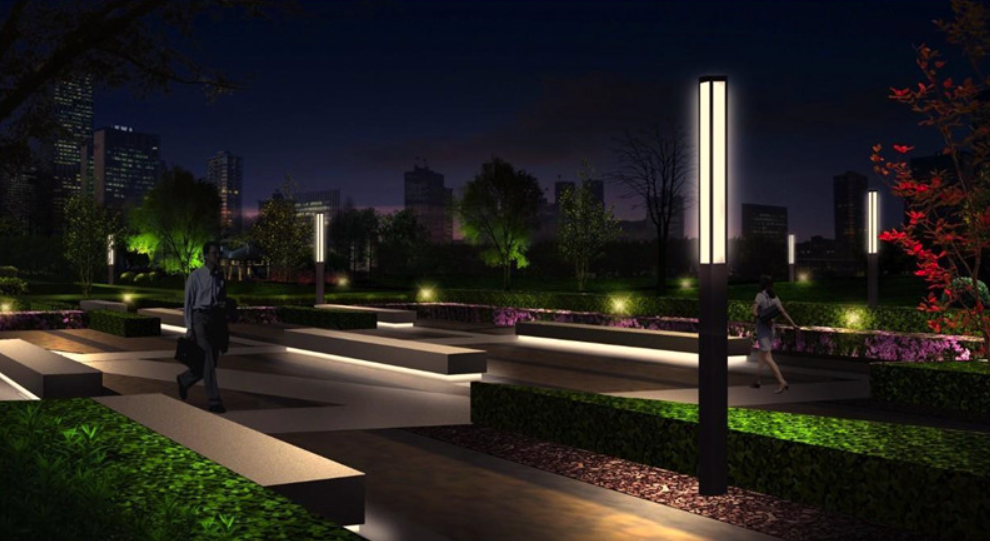
Determining the Function of Your Lighting
Now, let’s get to why you need outdoor lights. Is it for safety? To keep away unwanted guests at night? Or, it’s for ambiance, to create a soft, welcoming glow for your customers. Each purpose calls for a different kind of light.
For security, brighter, more concentrated lights would be apt. These include floodlights and spotlights. Such lights are designed to illuminate larger areas and deter potential intruders.
Conversely, softer, diffuse lighting works best if you’re all about the mood. Consider ambient lights like bollards, wall lanterns, or even fairy lights. They spread a cozy glow, transforming your outdoor space into a charming oasis.
Identifying Potential Areas for Lighting Installation
Finally, it’s time to pinpoint where these lights should go. Begin with entrances and exits. These require good lighting for safety. Then, move on to pathways and stairs. Customers need to see where they’re going, right?
Look at landscaping features. Trees, shrubs, ponds, or gazebos. These are perfect for some fancy accent lighting.
Lastly, remember areas where people gather. Patios, seating zones, and smoking areas, if you have one. A well-lit space encourages people to sit, chat, and stay a while.
All this is good, but remember, we’re discussing outdoor lights. And outdoors means unpredictable weather. That’s where waterproof luminaires come in. They’re sturdy and resistant to rain, snow, and dust. They won’t let you down.
Remember, the right lights in the right places can transform your business. It’s about aesthetics and functionality. A safe, well-lit space makes for happy customers. And satisfied customers, well, they’re good for business.
Overview of Different Types of Waterproof Luminaires
Floodlights: Think of floodlights as the big guns of outdoor lighting. They’re super bright and perfect for covering large areas. The light from floodlights spreads out in a comprehensive, large ‘flood.’ You often spot these on sports fields, parking lots, or extensive commercial areas.
Spotlights: Spotlights are the focused cousins of floodlights. They produce a narrower, concentrated beam of light. Spotlights are great for highlighting specific areas or features. You’ll find them shining on signs, statues, or entrances.
Wall Lanterns: Wall lanterns are more about style. They hang on walls and give off a soft, welcoming glow. Either way, they add a touch of charm to your outdoor space.
Bollards: Bollards are the sturdy guys you see lining walkways and paths. They’re short, stand-alone lights that give off a gentle light. They help guide people along the path, ensuring safety and visibility.
There are, of course, many more types. But these are some of the most commonly used ones.
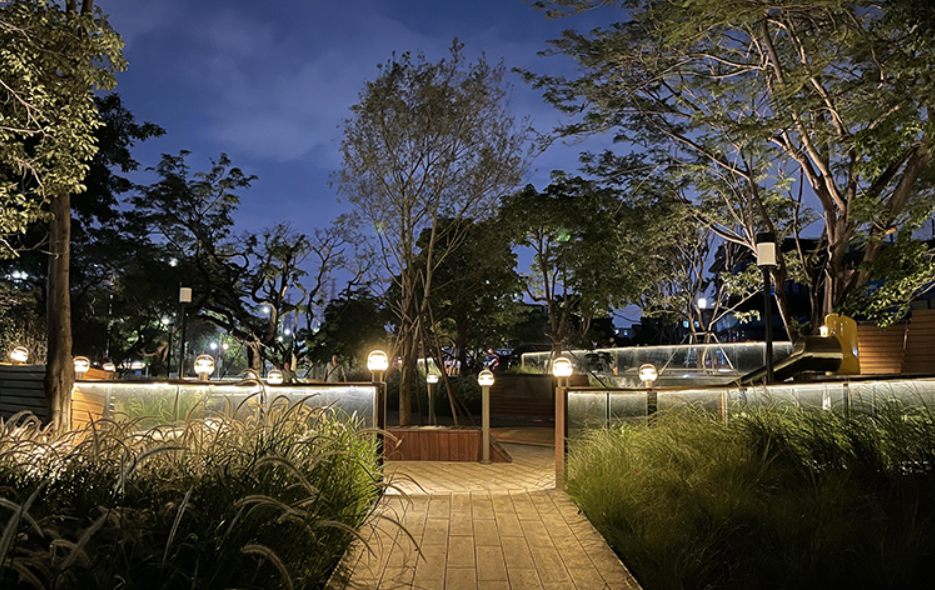
Matching Luminaire Types to Specific Business Needs
Now, let’s look at which light goes where.
Security or large area illumination: Floodlights are your best bet if you’re looking for security. They light up vast areas and can deter any potential mischief-makers. Floodlights can provide the necessary illumination if your business spans a large area.
Highlighting Features: Got something special you want to show off? Spotlights are the way to go. They can illuminate a business sign, an architectural feature, or any standout aspect of your business.
Creating Ambiance: Want to create a cozy, welcoming feel? Wall lanterns and bollards are perfect. Wall lanterns provide a warm glow and add an aesthetic touch. Conversely, Bollards line up walkways, providing your customers with a safe and inviting path.
Remember, it’s not about sticking to one type. So, feel free to mix and match. Use a combination of floodlights, spotlights, wall lanterns, and bollards. The right lights can transform your business, making it safe, functional but also beautiful and inviting.
4 Factors that Define Outdoor Lighting
Safety
Let’s start with something fundamental – safety. Outdoor lighting plays a big role in keeping your home and surroundings secure. You might ask, “How so?” Bright and well-placed lights can help you spot any potential threats easily, like intruders or dangerous animals. It’s not just about illuminating the yard, though. It’s about strategic placement. Lights near the main entrance, backyard, and along the driveway or pathways can deter unwanted visitors. Proper lighting can act as a solid layer of protection around your house, giving you and your loved ones peace of mind.
Visibility
Moving onto our second point, visibility. Ever walked outside at night, tripped over a garden hose, or almost stepped on your pet because it was too dark? Annoying, right? That’s where outdoor lighting steps in. It provides the needed illumination to easily navigate your outdoor area, even in the dead of night. Visibility also means being able to enjoy your outdoor space after sunset. Want to have a late-night barbecue or a garden party? With the right outdoor lighting, there is always time to enjoy your backyard.
Structure
Thirdly, let’s chat about structure. It sounds quite technical. But don’t worry; it’s not. By structure, we mean the physical characteristics and positioning of the lights. Are they fixed or movable? Are they high up, closer to the ground, or maybe even in the ground? These factors shape how the light is cast and the kind of ambiance it creates. For instance, low-ground lights can accentuate a garden path beautifully, while higher, more direct lights can highlight a building’s architecture. Choosing the right light structure for your outdoor environment and design is all about choosing it.
Aesthetics
Finally, aesthetics! Now this is the fun part. The aesthetic aspect of outdoor lighting is all about style and appeal. It’s about using light to enhance the beauty of your outdoor space. Picture this: soft lights illuminating your garden, creating dramatic shadows and highlights. Or a brightly lit patio where you can host dinner parties under the stars. Aesthetically pleasing outdoor lighting can turn your yard into a beautiful extension of your living space, where you love to spend time, even after dark.
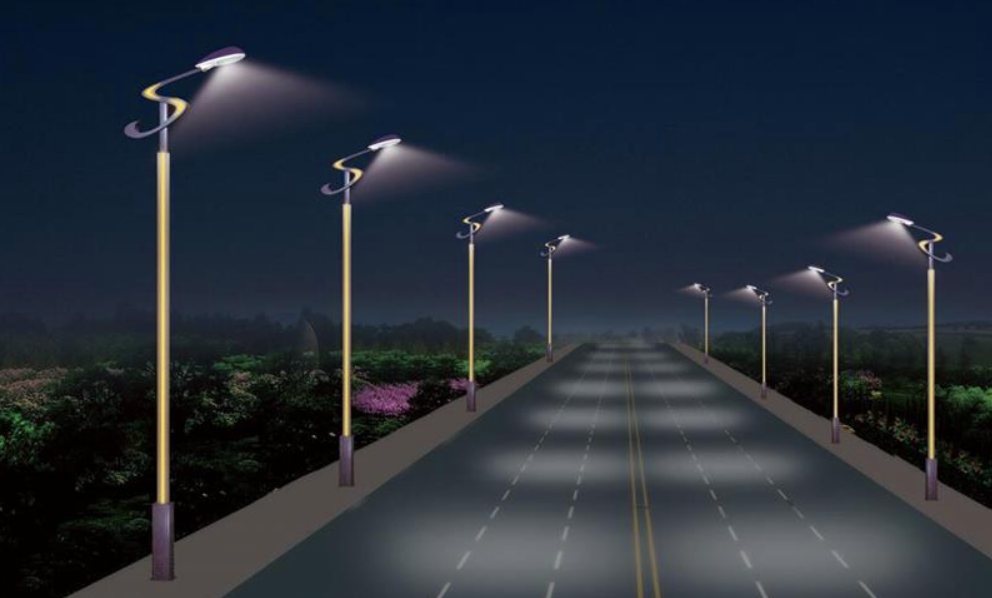
Outdoor Lighting Requirements
Let’s begin our journey into the outdoor lighting, shall we? Imagine, it’s twilight. You’re in your backyard, and as darkness falls, your outdoor lights start to flicker on, bathing your space in a soft, warm glow. This magic doesn’t happen by accident. It’s the outcome of careful planning and understanding key aspects: lumens, IP, and IK ratings. They might sound complex but worry not! We will unravel them, bit by bit, in layman’s terms.
Understanding Lumens
Now, what are lumens? Simply put, lumens are the measure of brightness a light emits. If you have a lamp that produces many lumens, it’s a bright lamp. On the other hand, a lamp with fewer lumens emits less light.
Consider your outdoor space. Is it a cozy little patio or a sprawling lawn? A garden pathway or a poolside deck? Depending on your space and purpose, you’ll need lights with varying lumens. For instance, if you want to highlight a feature like a beautiful tree or sculpture, you’ll need a light with higher lumens. Conversely, you’d use lights with fewer lumens for a subtle glow around your garden path. It’s like seasoning your food; you adjust according to taste, but in this case, visual comfort and functionality.
Demystifying IP Rating
Let’s switch gears and explore IP ratings. Don’t get puzzled when you see “IP” followed by two numbers on your outdoor lights. IP stands for “Ingress Protection”. The first number tells you about the light’s protection against solid particles, like dust, while the second number informs you about its resistance to liquids, primarily water.
Now, why’s this crucial for outdoor lights? Picture this. It’s a lovely rainy evening, and you’re sipping coffee, looking out at your backyard. The last thing you want is for your lights to falter in the drizzle. An IP rating suitable for outdoor lighting is usually IP65 or higher, ensuring your lights stay on, come rain or shine.
The IK Rating Story
Let’s get to know about IK ratings. Ever had a stray ball or a curious pet knocking over your outdoor lights? That’s where IK ratings come in handy. It’s a measure of how resistant your lights are to physical impacts. More the IK rating, the higher the resistance.
Lights with an IK rating of around 06 to 08 are generally sufficient for residential use. Consider higher IK ratings if you’re looking at commercial spaces or public areas. They ensure your lights stand their ground, surviving those unintentional bumps and knocks.
Energy Efficiency
First, we step into the realm of energy efficiency. Outdoor lights, you see, don’t just add to the visual appeal of space; they can also significantly impact energy consumption. Modern society is increasingly turning towards green solutions, with energy efficiency at the forefront of many discussions. This is true for outdoor lighting as well. But what does energy efficiency mean in this context?
Well, it’s about how much light is produced for each unit of energy consumed. LED lights are a good example. They use less energy and have more light compared to traditional incandescent bulbs. It’s like getting more for less, quite literally! Are all LED lights energy-efficient? The answer is not all of them are. Look for those that are ENERGY STAR-rated. These products meet strict efficiency, quality, and lifetime criteria.
Quality and Durability
Next, we’re talking about quality and durability. Imagine this – you’ve just installed some outdoor lights, and they look fantastic. However, they start flickering or stop working in a few months. Nobody wants that. So, how can you avoid it? Here’s the deal: choose high-quality, durable lights. It might mean shelling out more money initially, but it’s worth it in the long run.
Outdoor lights face a lot – weather changes, temperature fluctuations, and possibly, the odd football hit by a playful child. They need to be solid and durable. Look for lights with robust construction and resistance to weather changes. And remember, while a light might be labeled as ‘outdoor,’ it doesn’t guarantee it can withstand all conditions. Check the IP (Ingress Protection) rating.
Design and Aesthetics
Finally, let’s journey into design, style, and aesthetics. This is the fun part, where you can let your creativity loose. But there’s also a lot to consider. Your outdoor lighting should complement your home’s style and the natural environment. It should create a harmonious blend between man-made structures and nature’s design.
Are you going for a vintage charm or a sleek modern look? Do you want a warm, welcoming glow or a bright, clear illumination? These are the questions to ask. And remember, outdoor lighting isn’t just about function. It should also be a reflection of your style.
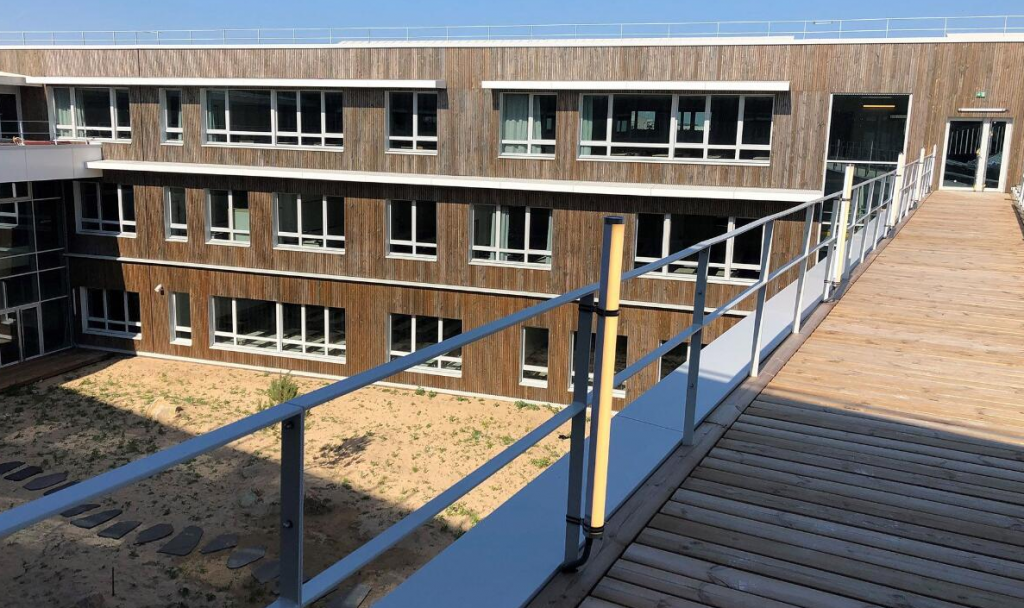
Importance of Professional Input
Lighting is a crucial component when setting up your outdoor business. It’s a significant factor in setting the right mood, ensuring safety, and making your business inviting to customers. The suitable luminaire, or lighting fixture, can bring your space to life. But how do you decide which one is perfect for your needs? This is where a lighting professional steps in.
A lighting professional knows the ins and outs of different types of luminaires. They consider factors like the amount of light required, energy consumption, cost-effectiveness, and, importantly, the weather conditions your lighting will face. Waterproof luminaires are critical for outdoor businesses, as they stand up to rainy or snowy conditions. This helps your business stay lit, no matter the weather. Professionals also consider aesthetics, ensuring your lighting complements your overall design. So, consulting a lighting professional can save you from costly mistakes and ensure you get it right the first time.
How to Find and Choose a Reliable Lighting Professional
Finding the right lighting professional may seem daunting. But fret no more; here are some simple steps to guide you. Start with a web search or ask friends for referrals. Once you have a few names, check out their portfolios. Look for previous projects that are similar to what you’re planning. This gives you a sense of their style and expertise.
Remember to check their reviews. What are past clients saying about them? Positive feedback, especially about their professionalism and quality of work, is a good sign. When you have a shortlist, contact them. Ask about their experience, especially with waterproof luminaires and outdoor businesses. It’s also a chance to get a feel for their communication skills.
It’s also crucial to ask about their credentials. Are they certified by a recognized lighting organization? Do they have the necessary licenses to operate? Also, discuss their fees upfront so there are no surprises later. Lastly, trust your gut. You should feel comfortable with this person, as you’ll work closely together.
Role of a Lighting Professional in Choosing the Right Luminaire
Choosing the suitable luminaire goes beyond picking a pretty design. A lighting professional will guide you through a series of decisions. They’ll assess your outdoor space and consider your business type. They’ll ponder what kind of ambiance you want to create. Do you want a bright, lively feel for a restaurant? Or a relaxed, cozy vibe for a coffee shop?
Then they’ll consider the technicalities. What’s the best light color and intensity for your space? How can you save on energy while maintaining excellent lighting quality? They’ll also think about maintenance and longevity. Waterproof luminaires, for instance, need to be durable to withstand various weather conditions.
Lighting professionals also consider local regulations on outdoor lighting. They make sure your design doesn’t cause light pollution or disturb neighbors. Lastly, they ensure the luminaires are installed correctly and safely. By understanding your needs and using their expertise, a lighting professional can help you choose the perfect waterproof luminaire for your outdoor business.
Understanding Installation Procedures
Installing your new outdoor lights is a big job. But don’t worry; it’s easier than you think. Start with your lighting plan. Remember the spots you marked for lights? That’s your roadmap.
Now, onto the lights. Unpack them carefully. Check if all parts are there. Manual in the box? Good. Read it. No, don’t just skim; read it. It’s your best friend in this process.
Installation varies with light types. For instance, wall lights need mounting on walls. That requires a drill and some screws. Floodlights may need more robust fixtures. Solar lights? They need plenty of sun.
Got the right tools? Great. But what about the power? Are you connecting to the main power supply or using solar energy? Be clear about this. You might need an electrician if it’s the former. Safety comes first, always.
Safety Concerns During Installation
And speaking of safety, let’s talk more about it. Working with electricity is no child’s play. Here are some points to remember:
- Turn off the power. Seems obvious, but you’d be surprised how often it’s overlooked. You don’t want any shocks, do you?
- Use insulated tools. They reduce the risk of electric shock.
- Be careful with ladders. Ensure they’re stable before you climb.
- If it feels too complex, hire a professional. Better safe than sorry.
Lastly, remember those waterproof ratings we talked about? Make sure your luminaires are suitable for your area’s weather. Rain and electricity? Not a good mix.
Maintenance and Cleaning Requirements
Now, onto upkeep. Your outdoor lights need some TLC to shine bright. Cleaning, for one. Dust and dirt can dull your lights. Clean them regularly. A soft, damp cloth often does the trick. But again, read the manual. Some might need special care.
Replacing bulbs is another task. Some LEDs last a long time, but when they dim, replace them promptly. Keep spare bulbs handy so you’re aware of the situation.
Look out for wear and tear. Cracks in the casing, loose wires, faulty switches. Minor issues can become big problems if ignored.
And one more thing. Remember the check-up. Like a doctor’s visit, but for your lights. A quick look-over now and then. It helps catch any issues early.
